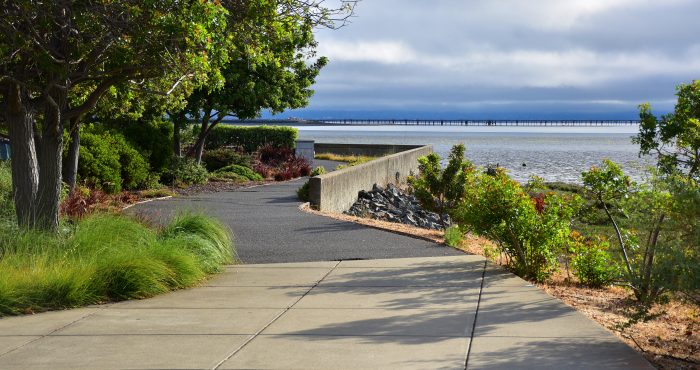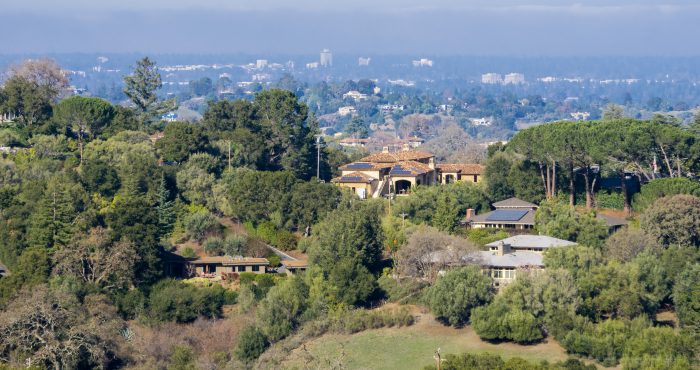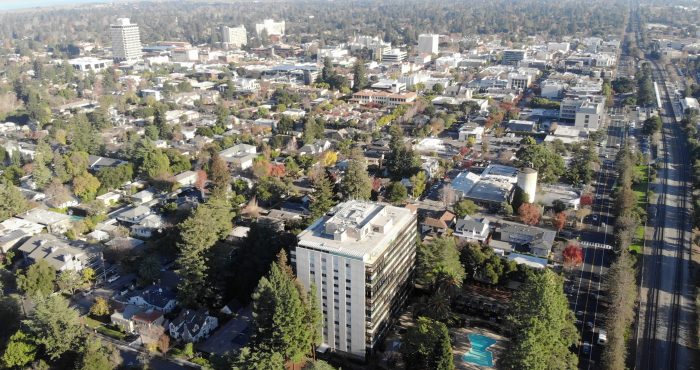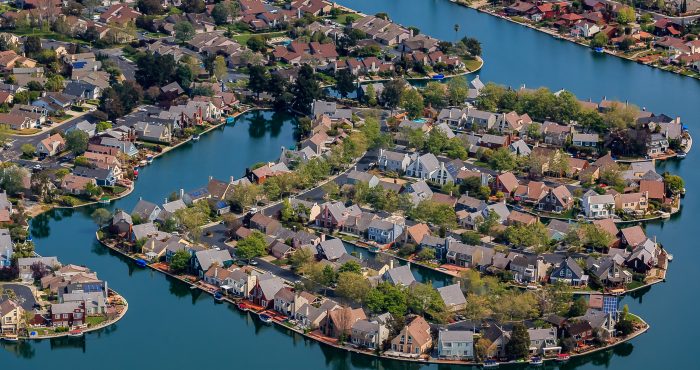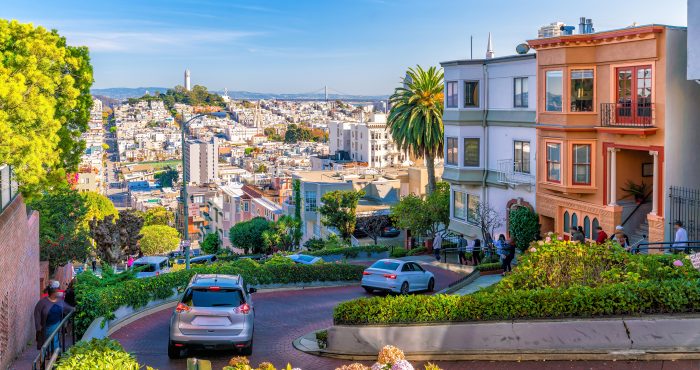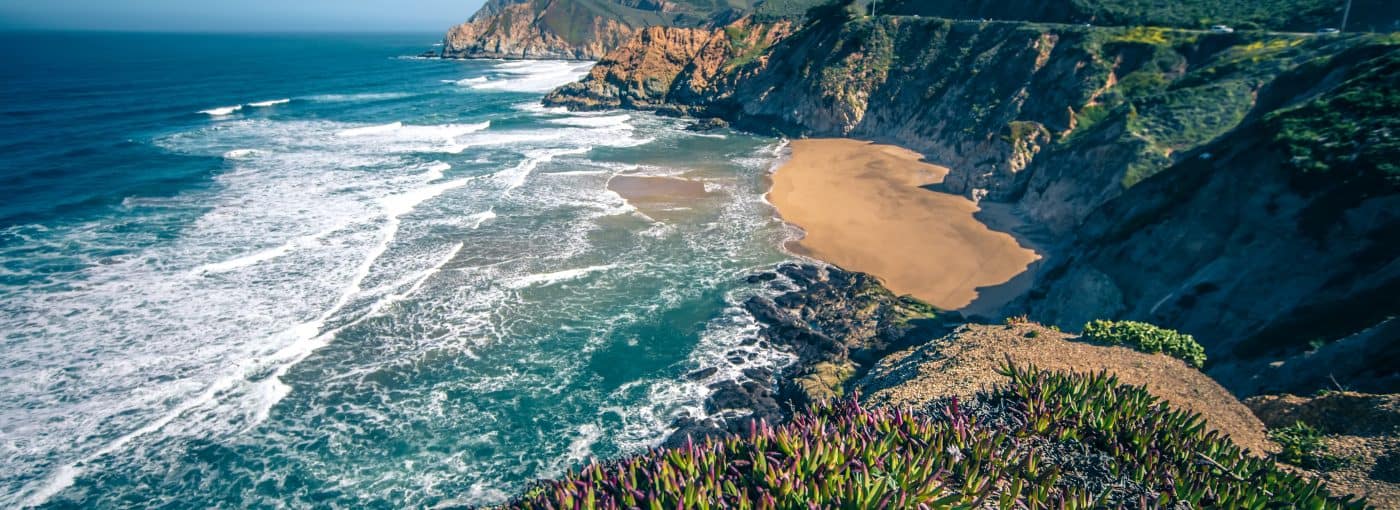
San Mateo, CA Real Estate
You found the right website if you are searching for homes for sale in San Mateo, CA. Our website has EVERY San Mateo home for sale in California listed with MLSListings Inc..
San Mateo is a city in San Mateo County, California, on the San Francisco Peninsula. About 20 miles (32 km) south of San Francisco, the city borders Burlingame to the north, Hillsborough to the west, San Francisco Bay and Foster City to the east and Belmont to the south. The population is 105,661 per the 2020 census.
San Mateo has a Mediterranean climate and is known for its rich history at the center of the San Francisco Bay Area. Some of the biggest economic drivers for the city include technology, health care and education.
Living In San Mateo, CA
History
The Ramaytush people lived in the land, prior to it becoming the city of San Mateo. In 1789, the Spanish missionaries had named a Native American village along Laurel Creek as Los Laureles or the Laurels (Mission Dolores, 1789). At the time of Mexican Independence, 30 native Californians were at San Mateo, most likely from the Salson tribelet.
Naming of the city
Captain Frederick William Beechey in 1827 traveling with the hills on their right, known in that part as the Sierra del Sur, began to approach the road, which passing over a small eminence, opened out upon “a wide country of meadow land, with clusters of fine oak free from underwood… It strongly resembled a nobleman’s park: herds of cattle and horses were grazing upon the rich pasture, and numerous fallow‑deer, startled at the approach of strangers, bounded off to seek protection among the hills… This spot is named San Matheo, and belongs to the mission of San Francisco.”
Starting in 1856, the city of San Mateo was documented by Spanish colonists as part of the Rancho de las Pulgas (literally “Ranch of the Fleas”) and the Rancho San Mateo, the earliest history is held in the archives of Mission Dolores.
19th century
Around the 1850s, some San Franciscans began building summer homes in the mid-Peninsula, because of the milder climate. While most of this early settlement occurred in adjacent Hillsborough and Burlingame, a number of historically important mansions and buildings were constructed in San Mateo.
A.P. Giannini, founder of the Bank of Italy (which later became the Bank of America), lived here most of his life. His mansion, Seven Oaks, is listed in the National Register of Historic Places (No. 99001181). Located at 20 El Cerrito Avenue, it has been deteriorating as it has not been preserved or occupied for years.
In 1858, Sun Water Station, a stage station of the Butterfield Overland Mail route, was established in San Mateo. It was located 9 miles (14 km) south of Clarks Station in what is now San Bruno and 9 miles north of the next station at Redwood City.
The Howard Estate was built in 1859 on the hill accessed by Crystal Springs Road. The Parrott Estate was erected in 1860 in the same area, giving rise to two conflicting names for the hill, Howard Hill and Parrot Hill. After use of the automobile changed traffic patterns, neither historic name was commonly applied to that hill. The Borel Estate was developed near Borel Creek in 1874. It has been redeveloped since the late 20th century for use as modern offices and shops. The property is managed and owned by Borel Place Associates and the Borel Estate Company.
Hayward Park, the 1880 American Queen Anne-style residence of Alvinza Hayward (often said to be “California’s first millionaire” from his silver and banking fortunes), was built on an 800-acre (3.2 km2) estate in San Mateo which included a deer park and racetrack, roughly bounded by present-day El Camino Real (on the west), 9th Avenue (on the north), B Street (on the east) and 16th Avenue (on the south). A smaller portion of the property and the mansion, was converted into The Peninsula Hotel in 1908, following Hayward’s death in 1904. The hotel burned down in a spectacular fire on 25 June 1920.
20th century
In 1893, Pedro Evencio had been called the last of the Ramaytush Native American of San Mateo. However his descendant, Joseph (José) Evencio (the younger) lived at Coyote Point until World War II; his final whereabouts are unknown.
In the early 20th century, Japanese immigrants came to San Mateo to work in the salt ponds and flower industry. Although Japanese-Americans only account for 2.2% of the population today, they continue to be a major cultural influence and a draw for the rest of the region. The Eugene J. De Sabla Japanese Teahouse and Garden was established in 1894 at 70 De Sabla Road, designed by Makoto Hagiwara, designer of the Japanese garden in Golden Gate Park in San Francisco. He arranged for Japanese artisans to be brought to the United States primarily for its teahouse construction. The parcel was purchased in 1988 by San Francisco businessman Achille Paladini and wife Joan, who have restored it. The garden features hundreds of varieties of plants and several rare trees. A large koi pond surrounds an island. The property was placed on the National Register of Historic Places in 1992.
In December 1967, Sgt. Joe Artavia, then serving in Vietnam with Alpha Company, 1st Battalion, 327th Infantry Regiment of the 101st Airborne Division wrote to his sister, Linda Giese, who was a resident of San Carlos working in San Mateo, asking if San Mateo or San Francisco could adopt the company, saying that it would bring “the morale of the guys up as high as the clouds”. San Mateo passed a resolution on March 4, 1968, officially adopting Alpha Company and letters and gifts began arriving from the citizens of San Mateo. Joe would be killed in action on March 24, 1968, less than three weeks after the resolution. Linda would travel to Vietnam to meet with the men of Alpha Company for Christmas in 1968 and deliver personalized medallions from the City of San Mateo. In 1972, San Mateo requested and received permission to have Alpha Company visit the city when they left Vietnam, later holding a parade in January 1972, believed to be the only parade honoring the military during the Vietnam War. In 1988, Joseph Brazan wrote a screenplay entitled A Dove Among Eagles chronicling the adoption of Alpha Company by San Mateo and the real-life romance between Linda and Artavia’s commander, Lt. Stephen Patterson. The city expanded its support to the entire 1st Battalion in 1991, when they were deployed to Kuwait under Operation Desert Storm.
Bay Meadows horse-racing track was torn down in 2008.
Geography
The best-known natural area is Coyote Point Park, a rock outcropped peninsula that juts out into the San Francisco Bay. The early Spanish navigators named it la punta de San Mateo. Crews of American cargo ships carrying grain in the bay renamed it Big Coyote. Sailors had a penchant for naming promontories at the edge of San Francisco Bay after the coyote; across the bay in Fremont are the Coyote Hills, part of Coyote Hills Regional Park. By the 1890s, the shore area was developed as a popular beach called San Mateo Beach. In 1842, the Spanish had named it playa de San Mateo. Today, Coyote Point is home to CuriOdyssey, formerly known as the Coyote Point Museum, a major natural history museum and wildlife center in the state. The Peninsula Humane Society is also situated at Coyote Point.
The variety of natural habitats includes mixed oak woodland, riparian zones, and bayland marshes. One endangered species, the California clapper rail, was sighted feeding on mudflats by the Third Avenue bridge in San Mateo. The marsh areas are also likely habitat for the endangered salt marsh harvest mouse, which inhabits the middle and high zones of salt and brackish marshes, as well as for the endangered marsh plant, Point Reyes bird’s beak.
Sugarloaf Mountain, whose name has been documented in 1870, is a prominent landform between the forks of Laurel Creek. In the late 20th century, this mixed oak woodland and chaparral habitat was a site of controversy related to proposals to develop a portion of the mountain for residential use. It has been preserved for use as park and open space area, and is home to the endangered mission blue butterfly.
Sawyer Camp Trail, located on the western edge of San Mateo along the Crystal Springs Reservoir, is another popular destination for joggers, pedestrians, and bikers. This roughly 6-mile (9.7 km) trail begins in San Mateo and stretches north toward Hillsborough and San Bruno, parallel to the 280 freeway.
Climate
San Mateo has a Mediterranean climate with warm, dry summers and mild, damp winters. The city is generally shielded from the Pacific Ocean by the Montara Mountain block of the Santa Cruz Mountains, but two gaps in the mountains (the San Bruno Gap, between Montara Mountain and San Bruno Mountain; and the Crystal Springs Gap, near where State Route 92 meets State Route 35, west of the College of San Mateo) can channel ocean weather, resulting in gusty afternoon winds that bring fog toward San Mateo in the late afternoon through early morning in the summer.
The National Weather Service maintained a cooperative weather station in San Mateo until 1978; records for the period show that January, the coolest month, had an average maximum of 57.8 °F (14.3 °C) and an average minimum of 41.7 °F (5.4 °C), and September, the warmest month, had an average maximum of 78.0 °F (25.6 °C) and an average minimum of 54.2 °F (12.3 °C). The record maximum temperature was 109 °F (43 °C) on June 14, 1961, and the record minimum temperature was 25 °F (−4 °C) on January 5, 1949, and December 9, 1972. Annual precipitation averaged 18.77 inches (477 mm) of rainfall, falling on an average of 60 days each year. The wettest year was 29.77 inches (756 mm) in 1973 and the driest year was 11.16 inches (283 mm) of rainfall in 1953. The most precipitation in one month was 12.59 inches (320 mm) of rainfall in December 1955 and the most precipitation in 24 hours was 3.72 inches (94 mm) of rainfall on December 23, 1955. Based on comparison with the existing NWS office at San Francisco International Airport, San Mateo is generally a few degrees warmer in summer than the airport and a few degrees cooler in winter, while annual precipitation is almost the same at the airport and in San Mateo. In recent years, daily temperature reports for San Mateo from local weather observers have been published in the San Mateo Times and the San Francisco Chronicle.
Cityscape
In general, San Mateo’s downtown core and the neighborhoods east of El Camino Real are more populous and have a greater density than the neighborhoods to the west of El Camino Real, where there is a lower population density.
Downtown
San Mateo has one of the larger, better-developed suburban downtowns in the San Francisco Bay Area. It is located roughly between Tilton Ave. to the northwest, 9th Ave. to the southeast, Delaware St. to the northeast and El Camino Real to the southwest. The downtown core contains over 800 shops and restaurants, many located in historic buildings from the late 19th and early 20th centuries. The non-profit Downtown San Mateo Association (DSMA) works on behalf of downtown businesses to promote them and improve the downtown area.
Central Park is considered to be San Mateo’s signature park with a baseball field, tennis courts, sculptures, picnic areas, playground, Japanese tea garden, recreation center, miniature train, rose garden and the San Mateo Arboretum. The 16.3-acre (6.6 ha) property was purchased by the city in 1922. A historically influential area for the Japanese-American community, the downtown is home to many Japanese restaurants and shops. A large, 12-screen movie theater complex is located off the Main Street alley between 2nd and 3rd Ave. The San Mateo Caltrain station is situated downtown. The area also contains many large and small multi-story office buildings, apartments, government buildings and Mills Medical Center.
Pedestrian mall
Segments of South B Street between 1st and 3rd Ave. and the southbound lane between Baldwin and 1st Ave. were temporarily closed to vehicular traffic in 2020 to allow for expanded outdoor dining. The San Mateo City Council extended the temporary closure through the end of 2021 and voted in September 2021 to create a permanent pedestrian mall between 1st and 3rd Ave. The plan requires a 12-foot (3.7 m) fire lane in the center of the street for public safety vehicles and necessary garbage or delivery services. The city aims to conduct the project in two phases: First, by installing retractable bollards and updating traffic signals and signage, then by raising the level of the street to be flush with sidewalk and reimagining its landscaping.
Hillsdale
Hillsdale Shopping Center is a mall in San Mateo County, with over 120 stores in the mall itself, surrounded by many big box stores. Tenants include anchors Nordstrom, Ethan Allen and Macy’s. The construction of a new food court and the outdoor North Block Plaza expanded the mall in 2019. New entertainment additions include luxury movie theater Cinépolis and a Pinstripes bowling alley off El Camino Real. The Hillsdale Caltrain station is located across El Camino.
Bay Meadows
The Bay Meadows neighborhood is an 83-acre (34 ha) mixed-use transit-oriented development on the site of the former Bay Meadows Racetrack, a horse racing venue that closed in 2008. The area includes hundreds of new residential units, office space, retail space and parks and a town square. Ground broke in 2012 and construction on various projects continues as of 2021.
Economy
The economy of San Mateo would best be considered very diverse with jobs in the technology, health care, financial services, government, and retail trade fields being among the most numerous. Companies based in San Mateo include Sony Interactive Entertainment, NetSuite, Franklin Templeton Investments, Fisher Investments, Solstice, Guidewire Software, Coupa, Snowflake Inc., Roblox Corporation, Marketo, SurveyMonkey, Devsisters USA, and GoPro.
Since 1990, San Mateo has had a voter-approved ordinance limiting the height of new development to 55 feet (17 m). The San Mateo housing market is one of the most expensive in the country. In February 2018, the median San Mateo home was valued at $1,463,900, and the median rent was ranked ninth in the entire nation, at $2,242 per month.
In the mid-2000s, the second stories of downtown San Mateo buildings became a hub for startup companies, including Roblox, GoPro and YouTube.
Education
Residents are zoned for schools in the San Mateo Foster City School District and San Mateo Union High School District. Elementary schools comprise Preschool, K-5, Middle and Magnet schools. There is a private, PreK-8 school: Saint Matthew’s Episcopal Day School There are three public high schools: San Mateo, Aragon, and Hillsdale. There are also three private high schools: one all-male Catholic high school, Junípero Serra, one all-female Catholic high school, Notre Dame, and the Nueva Upper School. There is the Carey School.
The San Mateo Union High School District also hosts an adult school behind San Mateo High School. The San Mateo Performing Arts Center, one of the largest local theaters, is located on the San Mateo High School campus.
The city is home to the College of San Mateo, a community college. The campus of over 10,000 students is located on 153 acres (0.62 km2) in the western foothills of the city which offer a panoramic view of the San Francisco Bay. Other universities in the area include Notre Dame de Namur University, a private Catholic university of 2,000 students in neighboring Belmont and Stanford University located about 12 miles (19 km) to the south.
Public libraries
The City of San Mateo operates three libraries within the city. The Main Library, the Hillsdale Library, and the Marina Library are all part of the Peninsula Library System. The Main Library located near Central Park in downtown opened in 2006 after residents passed a $30 million bond measure. Upon opening, the three-story, 93,000-square-foot (8,600 m2) building earned numerous design awards and was LEED-certified NC Gold. Floor-to-ceiling windows provide abundant natural light. The technologically advanced building is modeled after a retail bookstore.
Parks and recreation
San Mateo maintains more than 15 parks throughout the city. Central Park is considered to be the main one and hosts many community park functions that serve downtown residents. It has a Japanese tea garden to commemorate sister city Toyonka, Japan. The park also features a rose garden, a mini train and the San Mateo Arboretum.
Beresford Park is another large park that offers bocce ball and a skate plaza. Martin Luther King Jr. Park and Joinville Park offer swimming pools, while Ryder Park boasts a water play structure. Parkside Aquatic Park located on Seal Slough has beach swimming and volleyball. Many of these parks have picnic areas with grills, children’s play areas, basketball and tennis courts, and baseball diamonds.
Coyote Point Park, near the border with Burlingame and on the San Francisco Bay, is a 670-acre (2.7 km2) regional county park known for its ideal location for windsurfing and sailing. It is also home to CuriOdyssey: a hands-on science museum and small native animal zoo.
Public art is located all around the city. One of the more memorable works is the large, brightly colored 1963 mosaic mural designed by Louis Macouillard and constructed by Alfonso Pardiñas. The mural is located in front of a mid-century-modern-style Bank of America branch at 300 S. El Camino Real and tells the story of A. P. Giannini, the founder of Bank of Italy (United States).
Transportation
Freeways
San Mateo is considered to be near the center of the San Francisco Bay Area about halfway between San Francisco and San Jose, the region’s two largest cities. It is served by three major freeways, including U.S. Route 101, Interstate 280, and State Route 92. State Route 92 east of San Mateo traverses the San Francisco Bay as the San Mateo-Hayward Bridge to the city of Hayward on its eastern shore.
Bicycling
San Mateo has a network of bikeways connecting major destinations in the city. In 2011, the city approved a Bicycle Master Plan to establish bicycling goals, identify gaps in the existing bikeway system, and create a prioritized list of infrastructure improvement projects.
Public transportation
SamTrans provides local bus service within the city of San Mateo as well as the entire county of San Mateo. AC Transit provides transbay bus service via the San Mateo Bridge to Alameda County. Caltrain provides commuter rail service on the San Francisco Peninsula between San Francisco and San Jose. Caltrain operates three stations within the city of San Mateo with stations at Hillsdale (serving the mall and surrounding area), Hayward Park (near Highway 92), and San Mateo (in downtown San Mateo). There are 41 northbound and 41 southbound trains with a stop in the city each weekday and 18 trains in both directions on weekends. Extra southbound trains are run to accommodate passengers after San Francisco Giants games. See public transportation in San Mateo County for more details.
Airports
San Mateo is located near three major airports, including San Francisco International Airport seven miles (11 km) to the north. Oakland International Airport and San Jose Mineta International Airport are also within a half-hour drive. San Carlos Airport is a general aviation airport located about six miles (9.7 km) to the south.
Other services
Hospitals in San Mateo include the San Mateo Medical Center, an acute-care facility operated by County of San Mateo. Cemeteries include Skylawn Memorial Park and St. John’s Cemetery.
The College of San Mateo hosts a year-round Saturday-morning farmers’ market for visitors and San Mateo residents alike, at 1700 W Hillsdale Blvd. The market is operated by the Pacific Coast Farmers’ Market Association and has over 100 farmers, hot-food vendors, and artisans from the San Francisco Bay Area.
San Mateo Schools
Buying a San Mateo Home
If you are a San Mateo, CA home buyer, our foremost goal is to provide you with exceptional customer service. Our goals are to help you purchase the right home, make sure you don’t miss out on any homes that meet your needs, and make sure you don’t pay too much for your next home. Please utilize our San Mateo, California real estate expertise to make your home search and buying experience as stress free and rewarding for you and your family as possible.
Selling Your San Mateo Home
If you're considering selling your San Mateo, California home, we utilize the latest, cutting-edge, real estate marketing tools to expose your property to the widest range of potential buyers. We are here to get your house aggressively marketed to sell as quickly as possible and for the best price! Our goals are to help you get your San Mateo, CA home sold, put you in the strongest negotiating position as possible, and to make it easier for you and reduce surprises.

